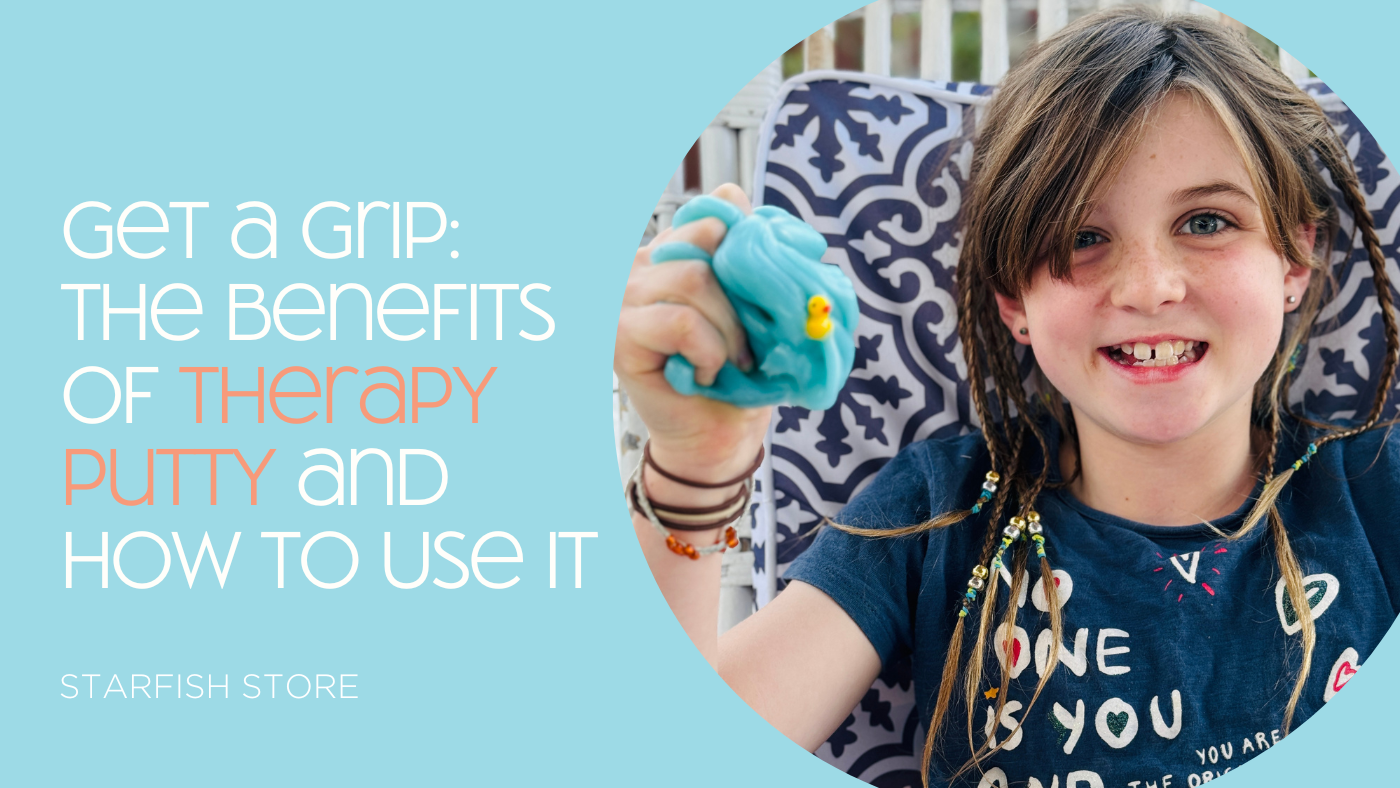Your Cart is Empty
New Blog: Quiet fidgets — when and why they help → Read the blog
New Blog: Quiet fidgets — when and why they help → Read the blog

Therapy putty (or "theraputty") is a versatile, silicone-based tool commonly used to enhance hand strength, dexterity, and fine motor skills. This pliable, non-toxic material offers various levels of resistance, making it perfect for therapeutic exercises, stress relief, and sensory activities.
Whether you're looking to improve grip strength, support focus, or simply relieve stress, therapy putty provides a range of benefits, especially for children or individuals with poor hand strength. Let’s explore how therapy putty works and some creative ways to use it.

Therapy putty is a highly durable and flexible material, often used in therapeutic settings due to its unique properties:
It is widely recommended to:
Therapy putty is available in a variety of resistance levels, represented by different colours. This allows users to gradually increase the difficulty as their strength improves. Most children start with soft or medium putty and progress as needed. For those with weaker hand strength, it’s best to start with extra-soft.
Pinching: Pinch between the thumb and fingers to improve grip strength.

Rolling: Roll into a ball or snake shape to enhance fine motor skills (use one or both hands).

Squeezing: Squeeze to build hand and forearm strength.

Stretching: Stretch between both hands for improved flexibility.

Twisting: Twist to work on wrist mobility and strength.

Poking: Poke with fingers and thumb to strengthen the digits.

Flattening: Flatten with the palm to increase palm strength.

Pressing: Press with fingers for focused thumb and finger strengthening.

Finger Scissors: Use fingers like scissors to cut through the putty.

Letter Forming: Form letters and numbers to improve fine motor control.

Object Hiding: Hide small objects inside and retrieve them for sensory enhancement.

Pin Rolling: Roll into thin strips using the fingers for precision.

Ball Forming: Form small balls to practice dexterity.

Confetti: pinch off little pieces to promote pincer grip.

Finger Walking: Walk fingers across for coordination improvement.

Imprint Making: Use objects to make imprints for sensory stimulation.

One-Handed Stretch: Stretch around the fingers and thumb for isolated strength.

Ball Squish: Roll into a ball and flatten between the fingers to build strength.

Moulding Shapes: Mould into shapes to combine creativity with functional hand exercises.

Finger Lines: Draw lines through the putty with different fingers to isolate strength training.

Therapy putty offers more than just fun activities. It provides real benefits in improving hand function, coordination, and overall well-being. Regular use can significantly enhance strength, dexterity, and fine motor control.

How long does therapy putty last?
If used as intended and stored properly, therapy putty can last up to a year.
How do I store therapy putty?
Store it in its container at room temperature, away from direct sunlight.
How do I remove therapy putty from hair?
Apply baby oil or hair conditioner, massage it into the hair, then comb through gently before washing with shampoo.
How do I remove therapy putty from carpet or fabric?
Scrape off excess putty. Spray WD-40 and let it sit for a few minutes before wiping the area with a damp cloth and dish soap. See below for video.
Therapy putty is an excellent, simple tool for enhancing hand strength, improving motor skills, and providing sensory and stress-relief benefits. Whether for kids or adults, it offers endless creative possibilities. Be sure to follow proper care and enjoy its therapeutic benefits!
Kirstie Wishart M.Ed (Special Education).
Owner and founder of The Starfish Store. Kirstie’s professional life has included: teaching (in both public and private schools in Australia, New Zealand and Thailand), lecturer and subject coordinator at the University of Wollongong, Educational consultant (working with children and young people with a trauma background), OoHC Case Work Manager, and Specialist Tutor (working with children and young people with significant learning difficulties and/or disabilities).

40 Proprioceptive activities for the classroom. Simple and practical activities to incorporate Proprioceptive into the classroom. 16 A4 sheets to print for your classroom, therapy space or home.